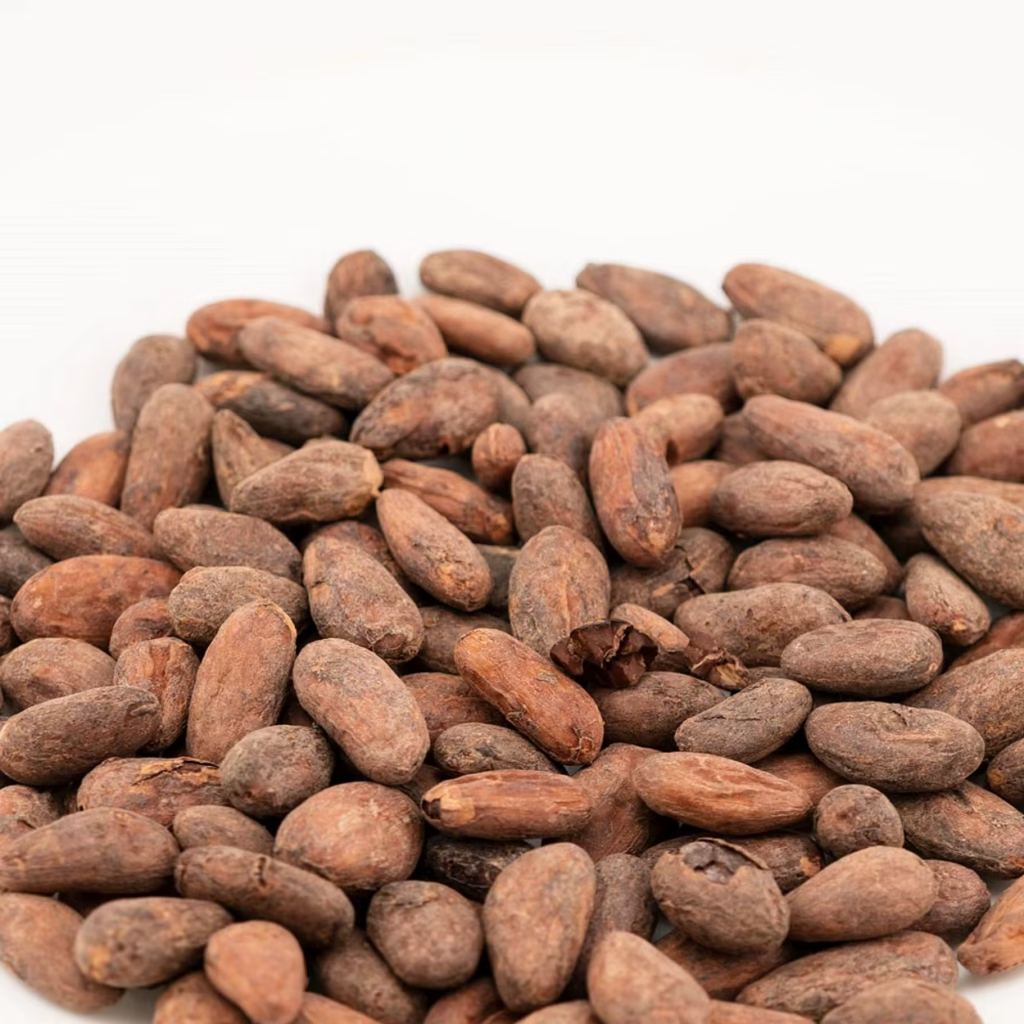Every factory manager knows this: the smallest raw material inconsistency can ripple through an entire production line. In Uzbekistan’s rapidly evolving manufacturing sector — where food, beverage, and confectionery industries are scaling at record speed — ingredient reliability isn’t a luxury; it’s a cornerstone of success.
Among those vital ingredients, alkalized cocoa powder stands out. Whether it’s shaping the rich color of a bakery filling, balancing flavor in a chocolate beverage, or improving viscosity in dessert coatings, it’s a multifunctional performer that touches product quality, process efficiency, and even brand identity.
For factories in Uzbekistan — from Tashkent to Samarkand — sourcing the right alkalized cocoa powder supplier has become an operational priority. It’s no longer just about “who sells cocoa”; it’s about which supplier understands industrial compatibility, consistency, and supply chain reliability.
At MT Royal, we’ve supplied countless manufacturing facilities across Asia and the Middle East with professional-grade cocoa ingredients. We’ve seen firsthand how the right supplier relationship can reduce waste, optimize production cycles, and elevate final product standards.
So let’s dive into what makes alkalized cocoa powder so essential for Uzbek production plants, what to look for in a supplier, and why global-quality brands like Latamarko have become benchmarks for industrial excellence.
Understanding Alkalized Cocoa Powder: The Chemistry of Consistency
To understand why manufacturers prefer alkalized cocoa, we have to look beneath the surface.
Cocoa beans naturally contain acids that make the raw powder slightly bitter and sharp in flavor. Through alkalization (also known as “Dutch processing”), cocoa nibs or liquor are treated with mild alkalis such as potassium carbonate. The result? A smoother, darker, and more soluble powder.
For industrial users, that transformation is not merely about taste — it’s about control.
- Color precision: Alkalization allows manufacturers to standardize color shades — from warm mahogany to deep ebony — critical for visual branding in chocolate bars, biscuits, and drink powders.
- Flavor refinement: The process neutralizes acidity, producing a smoother and more balanced chocolate flavor suitable for large-batch production.
- Improved dispersibility: Alkalized powders dissolve faster and more evenly in liquid matrices, making them ideal for beverage and dairy systems.
- Stable pH: Predictable alkalinity simplifies formulation control across multiple production environments.
In the context of Uzbekistan’s growing industrial chocolate, bakery, and beverage production, this consistency ensures factories can scale without sacrificing quality.
Uzbekistan’s Manufacturing Landscape and Ingredient Evolution
Over the past decade, Uzbekistan has made significant investments in food processing, packaging, and ingredient import diversification. New chocolate and biscuit plants are emerging, often designed with modern European or Turkish technology.
But with modernization comes a new set of challenges — particularly in ingredient sourcing. Manufacturers face fluctuating global cocoa prices, variable quality from regional suppliers, and logistical complexities in maintaining continuous supply.
That’s where partnering with experienced global distributors like MT Royal becomes a competitive advantage.
We’ve seen production facilities in Central Asia move from small-batch, semi-automated setups to fully integrated lines. These facilities now demand ingredients that are:
- Consistent across shipments
- Compatible with automated systems
- Packaged for local climatic conditions
- Supported by strong technical documentation
When those factors align, production downtime drops — and profit margins rise.
Natural vs. Alkalized Cocoa Powder: A Practical Comparison for Factories
Many procurement officers still ask whether alkalized cocoa is worth the additional investment compared to natural cocoa powder. Here’s a quick technical comparison to clarify why industrial plants typically choose alkalized variants:
| Property | Natural Cocoa Powder | Alkalized Cocoa Powder |
|---|---|---|
| pH Level | 5.0 – 6.0 (acidic) | 6.8 – 8.0 (neutral to mildly alkaline) |
| Color Tone | Light brown | Deep brown to black |
| Flavor Profile | Sharp, acidic | Smooth, balanced |
| Solubility | Limited in cold liquids | Excellent dispersibility |
| Best For | Artisanal recipes, small bakeries | Industrial-scale beverage, bakery, confectionery lines |
The alkalization process also improves wettability — a crucial factor in automated mixing and pneumatic transfer systems used in large factories.
For production supervisors in Uzbekistan, this translates into fewer blockages, faster blending cycles, and reduced product loss.
Industrial Advantages: How Alkalized Cocoa Powder Boosts Manufacturing Efficiency
When selected wisely, alkalized cocoa becomes a performance ingredient that drives tangible results on the factory floor. Here’s how it benefits different production sectors in Uzbekistan:
1. Confectionery Manufacturing
In chocolate coatings and fillings, alkalized cocoa enhances color depth and smoothness. Its low acidity prevents flavor clashes with emulsifiers and stabilizers.
2. Bakery and Biscuit Plants
Consistency is everything in baked goods. Alkalized cocoa offers reliable color even after heat exposure, allowing product developers to maintain identical shades across production batches.
3. Dairy and Instant Beverage Processing
Factories producing chocolate milk powders or instant cocoa drinks require cocoa that blends effortlessly without sedimentation. Alkalized variants are designed for exactly this performance profile.
4. Dessert and Ice Cream Formulations
The powder’s neutral pH supports balanced sweetness and a smoother mouthfeel — particularly useful in frozen desserts and syrups where texture consistency matters.
Each of these categories values predictable technical behavior, not just sensory quality — something global suppliers like MT Royal have mastered by working closely with plant engineers and R&D specialists across manufacturing environments.
Common Procurement Mistakes and How to Avoid Them
Every procurement professional knows that buying ingredients for industrial use is more complex than comparing price tags. Here are some common pitfalls we’ve observed in cocoa sourcing — and how to avoid them:
1. Over-focusing on Price
Cheaper cocoa powders often mean inconsistent alkalization, leading to color variation and taste imbalance. Over time, this inconsistency increases rework costs and damages brand reputation.
2. Ignoring Moisture Sensitivity
Uzbekistan experiences significant seasonal humidity variations. Without proper packaging (moisture-barrier multilayer bags), cocoa powder can clump or lose flowability.
3. Neglecting Supplier Traceability
Factories that fail to verify batch traceability risk noncompliance with export or ISO certifications. Reputable suppliers, including MT Royal, provide full COA and batch-level documentation.
4. Overlooking Compatibility Testing
Not every alkalized powder suits every process. Testing for mixing time, pH stability, and flow rate before full integration prevents costly production disruptions.
A well-structured supplier partnership — not a transactional purchase — prevents these challenges.
Selecting the Right Alkalized Cocoa Powder Supplier in Uzbekistan
The ideal supplier is one who combines technical expertise, reliable logistics, and a wide brand portfolio. Industrial buyers should assess potential partners using these criteria:
- Proven import and distribution capacity within Central Asia.
- Strong storage protocols to prevent moisture or contamination.
- Availability of diverse grades (light, medium, dark alkalization).
- Support for bulk and custom packaging formats (25 kg, IBCs, palletized units).
- After-sales technical consultation for process adaptation.
At MT Royal, we supply Uzbek factories with multiple international cocoa brands, carefully curated for industrial performance. We understand how small variables — from powder flow rate to color consistency — can impact output efficiency.
We’ve worked alongside production engineers and R&D teams to troubleshoot everything from machine clogging to inconsistent viscosity. That’s the kind of grounded expertise manufacturers deserve from their ingredient partner.
Spotlight on Latamarko: European Precision for High-End Manufacturing
When factories pursue excellence, ingredient precision becomes non-negotiable. That’s where Latamarko, a renowned Spanish-origin brand, enters the picture.
Spanish engineering has long set the bar for process reliability and consistent quality yields. Latamarko’s alkalized cocoa powders are designed specifically for industrial-scale applications, offering unparalleled dispersibility and color uniformity.
Manufacturers who use Latamarko products frequently highlight:
- Uniform particle distribution, minimizing dust generation.
- Controlled moisture levels, ideal for Uzbekistan’s diverse climate zones.
- Smooth flavor balance, reducing the need for additional flavor enhancers.
Factories seeking premium-grade cocoa with European consistency and long-term cost efficiency often find Latamarko among the top-performing options in the MT Royal portfolio.
Operational Tips for Factory Managers When Switching Cocoa Grades
Switching suppliers or grades can be a sensitive transition. Based on our experience working with production teams, here are five practical steps to ensure smooth adaptation:
- Pilot before rollout: Test the new powder on a small line to evaluate performance across mixing, baking, or dissolution steps.
- Monitor pH and color metrics: Establish reference points to maintain uniform sensory output.
- Adjust mechanical parameters: Slightly tweak mixing speed or temperature to optimize solubility and texture.
- Record every observation: Maintain detailed batch notes for traceability.
- Collaborate with your supplier: Technical discussions with your cocoa provider can prevent minor issues from escalating.
We’ve seen plants cut transition downtime by over 40% simply by implementing structured test runs before full deployment.
Manufacturing Realities: What Happens When Cocoa Quality Fails
It’s easy to underestimate how much cocoa quality affects total production efficiency. Consider a beverage plant where cocoa powder with poor flowability keeps clogging automated feeders. Each pause in production leads to downtime losses, rework, and wasted energy.
In another case, a bakery producer may find that inconsistent alkalization leads to uneven color in biscuits — subtle to the eye, but enough to trigger retail rejection.
These scenarios cost more than premium cocoa ever would. For production managers, the lesson is clear: ingredient reliability equals operational reliability.
Industrial Trends: The Future of Cocoa Procurement in Central Asia
Uzbekistan’s manufacturing renaissance is closely tied to technological modernization and ingredient standardization. As factories scale for export markets, international compliance and product uniformity become key differentiators.
We’re witnessing three major trends among industrial buyers:
- Shift toward European-quality ingredients – Plants are increasingly prioritizing performance over short-term cost savings.
- Focus on supply continuity – Manufacturers now value dependable partners who maintain stock levels and predictable delivery cycles.
- Sustainability alignment – Ethical sourcing is gaining traction, even in B2B procurement.
Suppliers like MT Royal, with access to sustainable and traceable brands such as Latamarko, are helping factories meet these evolving expectations.
Quality Tiers of Alkalized Cocoa Powder: Matching Product to Process
Alkalized cocoa powders are typically categorized by alkalization strength — light, medium, and strong. Each suits different product applications:
| Grade | pH Range | Color Tone | Typical Application |
|---|---|---|---|
| Light Alkalized | 6.8–7.0 | Medium brown | Cocoa beverages, ice cream bases |
| Medium Alkalized | 7.0–7.4 | Rich brown | Bakery, biscuits, dairy |
| Strong Alkalized | 7.5–8.0 | Dark brown to black | Premium chocolate, coatings, glazes |
Selecting the correct grade ensures not only aesthetic uniformity but also optimal viscosity, solubility, and processing time.
FAQs: Insights for Procurement and Production Professionals
Q1. What’s the shelf life of alkalized cocoa powder in Uzbekistan’s conditions?
Usually 18–24 months when stored below 25°C and in low humidity. Warehouses should use moisture control systems to preserve powder integrity.
Q2. Can I mix natural and alkalized cocoa powders?
Yes — blending both can balance flavor sharpness and color richness, but ratios must be standardized through lab trials.
Q3. Does higher alkalization always mean higher quality?
Not necessarily. It depends on the application. Excess alkalization may alter flavor in dairy mixes. The optimal level is product-specific.
Q4. How does supplier location affect delivery and freshness?
Regional warehousing and climate-controlled logistics reduce transit risk. Partnering with distributors like MT Royal, who maintain inventory within the region, minimizes delays.
Q5. What packaging format is best for large factories?
Most plants prefer 25 kg multilayer paper bags with inner polyethylene liners for easy palletization and protection from humidity.
Sustainability and Ethical Sourcing: The Next Chapter of Cocoa Supply
The global cocoa industry is moving toward traceability and fair labor standards. Even in industrial B2B supply, responsible sourcing has become a measure of brand credibility.
Premium European producers like Latamarko integrate sustainable sourcing directly into their operations, supporting ethical farming networks and transparent origin tracking.
At MT Royal, we value these initiatives because we’ve seen how global buyers — especially export-oriented factories — increasingly request sustainability credentials. It’s not just an ethical choice; it’s a market requirement.
Final Reflection
Every production facility, whether in Tashkent or Bukhara, runs on two fundamental elements — raw materials and trust. You can’t have consistent production output without both.
The best suppliers don’t just sell; they understand factory realities, from equipment tolerances to batch calibration. In our work with manufacturers across the region, we’ve seen how reliable partnerships create tangible production stability.
Alkalized cocoa powder is more than a flavor ingredient — it’s a silent enabler of efficiency, color uniformity, and flavor harmony across entire production systems.
When a manufacturer partners with a technically capable, globally connected supplier — one that offers brands like Latamarko under the professional guidance of MT Royal — that factory doesn’t just buy cocoa.
It invests in consistency, credibility, and competitive strength.
Because on the production floor, excellence isn’t a slogan — it’s what happens when every input works exactly as intended.
latamarko alkalized cocoa powder lm60
cocoa powder for chocolate production-Best price
Food industry raw materials – list of products
Types of Gelatin from Turkish Manufacturer
Alkalized Cocoa Powder Bulk Supplier







No comment